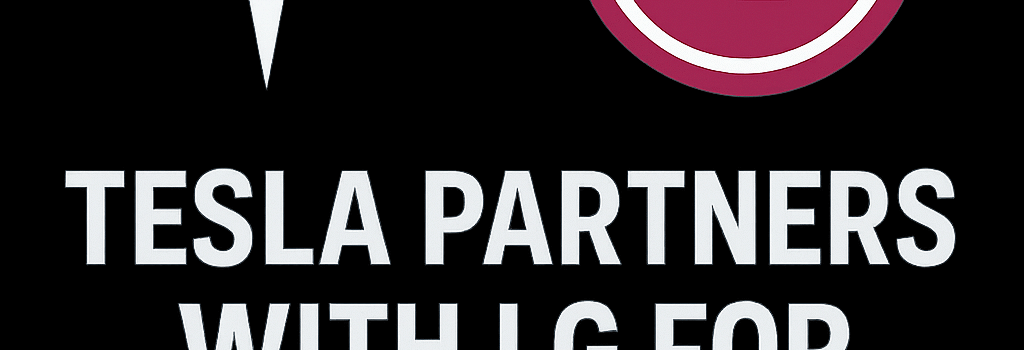Tesla Partners with LG for $4.3B LFP Cell Supply

Background
Tesla has long pursued vertical integration, but the automaker remains dependent on external suppliers for its battery cells. Historically, Tesla sourced nickel-cobalt-aluminum (NCA) cells from Panasonic and lithium iron phosphate (LFP) cells from China’s CATL. In July 2025, Tesla signed a landmark $4.3 billion contract with LG Energy Solutions (LGES) to supply LFP cells from Michigan through July 2030, with extension options.
Deal Details
Scope and Timeline
Under the agreement, LGES will deliver up to 100 GWh of prismatic LFP cells, representing roughly 15 million 50 kWh modules. Initial shipments begin August 2026, ramping to full volume by 2028.
Manufacturing Footprint
LGES’s Holland, Michigan, plant will produce cells tariff-free under the U.S. Inflation Reduction Act incentives. This local manufacturing avoids the 25% Section 301 tariffs on imports from China, streamlining cost structure and supply chain resilience.
Technical Deep Dive: LFP Cell Chemistry
Cell Architecture: LFP cells utilize an iron phosphate cathode, graphite anode, and polymer separator. Typical energy density is 140–160 Wh/kg and cycle life exceeds 4,000 cycles at 80% depth of discharge.
“LFP chemistry offers superior thermal stability and safety,” says Dr. Maria Nguyen, battery materials expert at the U.S. Department of Energy’s Joint Center for Energy Storage Research. Nominal voltage: 3.2 V; max continuous discharge: 1 C; operating temperature: –20°C to 60°C.
Market Outlook for Energy Storage
- Global installed capacity forecast to reach 200 GWh by 2030 (BloombergNEF).
- Utility-scale projects drive majority share, with Megapack and Megapack 2 deployments accelerating.
- Residential segment growing at 20% CAGR, led by Powerwall upgrades.
Strategic Implications: Supply Chain & Trade Dynamics
Shifting LFP cell sourcing to the U.S. enhances Tesla’s supply-chain sovereignty. “Domestic production mitigates geopolitical risk and tariff exposure,” notes supply-chain analyst Jason Feldman of Wood Mackenzie. The deal also puts pressure on CATL to localize more capacity in North America.
Tesla’s Energy Storage Product Line Evolution
Tesla’s portfolio includes:
- Powerwall 3: 13.5 kWh nominal, 5 kW continuous output, integrated bi-directional inverter.
- Megapack 2: 3.9 MWh capacity, 1.5 MW power, liquid-cooled modules, real-time grid balancing features.
- Future GridStack concept: modular, container-ready systems targeting up to 10 MWh in a single footprint.
Expert Perspectives
“This agreement represents a strategic inflection point for Tesla’s energy division,” says analyst Priya Patel of Woodside Capital. “It not only de-risks their supply chain but also positions Tesla to capitalize on surging grid storage demand.”
Conclusion
Tesla’s $4.3 billion deal with LG Energy Solutions marks a significant step toward domestic cell manufacturing, tariff avoidance, and expanded energy-storage offerings. As global demand for grid and residential storage accelerates, Tesla’s strengthened partnership with LGES could be pivotal in scaling production, reducing costs, and driving innovation in next-generation battery technologies.